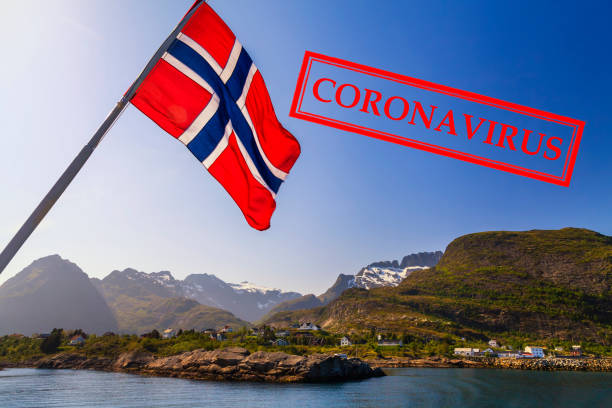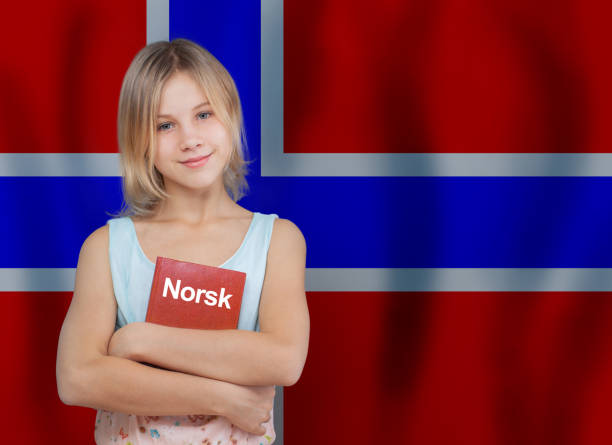Pathway to the Fjords: A Comprehensive Guide to Applying for Scholarships in Norway for International Master’s Students
Introduction: Unlocking Scholarship Opportunities in the Land of Fjords
Advertisements
Imagine yourself nestled amidst breathtaking fjords, delving into cutting-edge research and pursuing academic excellence at a prestigious Norwegian university. This dream can become a reality with a scholarship to fund your Master’s degree in Norway. This comprehensive guide equips you, the international student, with the knowledge and strategies to navigate the diverse scholarship landscape in Norway and transform your aspirations into a rewarding educational experience.
Unveiling the Scholarship Landscape in Norway
Understanding the various scholarship options empowers you to identify the most suitable funding opportunities for your academic aspirations:
Types of Scholarships in Norway:
-
Government Scholarships: The Norwegian government offers prestigious scholarships through programs like the Quota Scheme for Higher Education Places and the Scholarship Scheme for Master’s Level Studies in Norway. These scholarships typically cover full tuition fees and a generous living stipend, easing the financial burden of postgraduate studies. Securing a government scholarship is highly competitive, requiring a compelling application that showcases academic excellence, research potential, and alignment with national research priorities. Explore the website of the Norwegian Ministry of Education and Research for detailed information about these programs.
-
University Scholarships: Many Norwegian universities offer their own scholarship programs specifically for international Master’s students. These scholarships can be merit-based, need-based, or program-specific. Explore the scholarship webpages of your chosen universities to discover their offerings. Here are some additional resources to explore university scholarships in Norway:
- Study in Norway: This official website provides a comprehensive overview of the Norwegian education system, including information on scholarships offered by various universities.
- EU Scholarship Database: The European Commission’s scholarship database allows you to filter for scholarships offered by Norwegian universities specifically for international students.
-
Private Scholarships: Don’t overlook the potential of private foundations, organizations, and corporations offering scholarships for international students in Norway. These scholarships can be targeted towards students from specific countries, regions, or academic disciplines. Researching these options requires exploring websites of relevant foundations and organizations in your home country or those with a focus on your field of study. For instance, if you’re interested in studying renewable energy, explore scholarship opportunities offered by foundations dedicated to environmental sustainability, such as The Research Council of Norway or The ZERO Emission Resource Organisation. Private scholarships can be a valuable source of funding, particularly if you target organizations aligned with your research interests or career aspirations.
Understanding Eligibility Criteria:
Understanding the specific eligibility criteria for each scholarship program is paramount. These criteria can vary depending on the scholarship type (government, university, private) and the funding source. Here are some common eligibility factors to consider:
Advertisements
-
Academic Qualifications: Most scholarships require a strong academic background, typically reflected in a high GPA from your undergraduate degree. Some might require specific coursework or prior research experience relevant to the Master’s program you’re applying to.
-
Nationality: Certain scholarships might be restricted to students from specific countries or regions. Explore scholarships designated for international students from your home country to maximize your chances.
-
Language Proficiency: English language proficiency is often a requirement for Master’s programs in Norway. Standardized tests like the TOEFL/IELTS might be necessary to demonstrate your English language skills. Some scholarships might have specific score requirements, so review them carefully.
-
Work Experience: While not always mandatory, relevant work experience can strengthen your application, particularly for scholarships targeting professional development or specific industries.
-
Motivation and Research Interests: A compelling application essay or statement of purpose that articulates your academic motivations, research interests, and envisioned career path is crucial for many scholarships. Demonstrating alignment with ongoing research projects at your chosen university can make your application stand out.
Demystifying the Scholarship Application Process
Identifying Relevant Scholarship Programs
- Private Scholarships: Don’t overlook the potential of private foundations, organizations, and corporations offering scholarships for international Master’s students in Norway. These scholarships can be targeted towards students from specific countries, regions, or academic disciplines. Researching these options requires exploring websites of relevant foundations and organizations in your home country or those with a focus on your field of study.
Building a Strong Application Package:
Having identified promising scholarship opportunities, assemble a compelling application package that showcases your academic achievements, research potential, and alignment with the scholarship’s objectives:
- Application Forms: Carefully review application forms for each scholarship you target. Complete all sections accurately and thoroughly, ensuring you meet all eligibility criteria. Don’t leave any sections blank, even if optional.
- Academic Transcripts: These transcripts provide a detailed record of your coursework, grades, and any academic distinctions you’ve achieved. Ensure transcripts are translated into English by a certified translator if the originals are not in English.
- Standardized Test Scores (if required): Certain scholarships or universities might require standardized test scores like the TOEFL/IELTS (English language proficiency) or the GRE (Graduate Record Examinations) for some programs. Register for these tests well in advance and achieve scores that meet the program’s requirements. Including strong test scores in your application bolsters your candidacy and demonstrates your academic preparedness for a Master’s program in Norway.
- Letters of Recommendation: Secure strong letters of recommendation from professors familiar with your academic abilities and potential. Ideally, request letters from professors who have taught you core courses in your undergraduate field or supervised your research projects. A strong letter of recommendation should highlight your academic achievements, research aptitude, intellectual curiosity, and potential for success in a Master’s program. Provide your recommenders with clear instructions, your CV, and any relevant information about the specific scholarship program or university you’re applying to.
- Portfolio (for creative fields): For creative fields like design, architecture, or fine arts, consider including a portfolio showcasing your creative abilities and past projects. A strong portfolio can visually demonstrate your talent and potential for success in the program you’re applying to.
- Research Proposal (for some programs): Some Master’s programs, particularly those with a research focus, might require a research proposal as part of your application. This proposal outlines your proposed research topic, methodology, and expected outcomes. Develop a well-structured proposal that demonstrates your research skills, critical thinking abilities, and potential to contribute meaningfully to your chosen field.
Crafting a Compelling Statement of Purpose:
The statement of purpose (SOP) is your opportunity to tell your academic story and convince the selection committee why you deserve the scholarship. Here’s how to craft a compelling SOP that goes beyond the typical:
- Clearly Defined Goals: Articulate your clear academic and career goals with ambition and focus. Explain why you’re interested in pursuing a Master’s degree in Norway and how it aligns with your long-term aspirations. Research the specific Master’s program you’re applying to and demonstrate a deep understanding of its curriculum and faculty expertise. Showcase how your academic background and career aspirations resonate with the program’s focus and the research strengths of the faculty.
- Research Focus: Go beyond simply mentioning your research interests. Delve deeper and highlight your specific area of specialization within the chosen Master’s program. Demonstrate your familiarity with current research trends in your field and express your eagerness to contribute to ongoing research projects or explore new avenues of inquiry. Mention any relevant research experience you gained during your undergraduate studies, internships, or volunteer work. Frame these experiences to showcase your research skills, ability to think critically, and potential to contribute meaningfully to your chosen field of study.
- Highlight Achievements and Skills: Don’t just list your academic achievements and awards. Craft a compelling narrative that showcases how these achievements demonstrate your qualifications for the program. Highlight relevant skills or experiences that make you a strong candidate, such as leadership abilities, teamwork experience, proficiency in specific software or research methods. Quantify your achievements whenever possible to add impact. For instance, instead of simply stating you led a student organization, mention the size of the organization, the specific projects you led, and the positive outcomes achieved.
- Financial Need (if applicable): While some scholarships are fully funded, others might require a demonstration of your financial need. Briefly explain any financial constraints you face, but ensure the statement focuses on how the scholarship will empower you to pursue your academic goals in Norway, not solely on hardship.
Strategizing Your Scholarship Search
With a foundational understanding of scholarship opportunities and the application process, this chapter equips you with effective strategies to navigate the competitive landscape and identify scholarships that align perfectly with your academic aspirations and financial needs:
Targeting the Right Scholarships:
Don’t adopt a scatter-shot approach! Focus your efforts on scholarships that resonate with your profile and maximize your chances of success. Here’s how to strategically target your scholarship search:
-
Prioritize Based on Eligibility: Meticulously review the eligibility criteria for each scholarship you identify. Ensure you meet all requirements, including academic qualifications, nationality restrictions (if any), language proficiency requirements, and any minimum GPA benchmarks. Don’t waste time and effort applying for scholarships where you don’t fulfill the eligibility criteria.
-
Align with Your Goals: Prioritize scholarships that align with your academic goals and research interests. If a scholarship has a specific research focus, ensure your research interests demonstrably align with the ongoing research projects at the university. Targeting scholarships that resonate with your aspirations increases your chances of standing out from the crowd.
-
Consider Funding Coverage: Alongside eligibility and academic alignment, consider the financial coverage offered by each scholarship. While some scholarships fully cover tuition fees and living expenses, others might offer partial funding. Prioritize scholarships that provide sufficient financial support to cover your anticipated living costs throughout your Master’s program in Norway. Factor in expenses like accommodation, food, transportation, textbooks, and health insurance. Research average living costs in your chosen city to estimate your needs.
-
Application Deadlines: Pay close attention to application deadlines and ensure you submit your complete application package well before the deadline. Missing deadlines is an easy way to disqualify yourself from consideration. Set calendar reminders and develop a timeline for completing applications for each scholarship you target.
Optimizing Your Search Strategy:
Utilize a multi-pronged approach to maximize your chances of discovering scholarships that match your profile:
-
Leverage Scholarship Portals: Utilize online scholarship portals that aggregate scholarship opportunities specifically for international students. These platforms allow you to filter scholarships based on your nationality, field of study, level of study (Master’s), host country (Norway), and funding type (full or partial). Some reputable scholarship portals include:
- Scholarship Positions
- Scholarships.com
- The Scholarship Database
- educations.com (Focuses on scholarships without IELTS requirements)
-
University Websites: Explore the scholarship webpages of universities in Norway offering Master’s programs in your field of study. Many universities maintain dedicated scholarship webpages listing funding opportunities specifically for international students.
-
Government Scholarship Websites: Investigate scholarship programs offered by the Norwegian government, such as the Quota Scheme for Higher Education Places and the Scholarship Scheme for Master’s Level Studies in Norway. Explore the website of the Norwegian Ministry of Education and Research for detailed information.
-
Professional Associations and Networks: If your field of study has professional associations or networks, explore scholarship opportunities they might offer or advertise. These associations often support students pursuing advanced degrees in their specific disciplines.
-
Connect with Alumni and Advisors: Network with alumni from your chosen university or international student advisors at your home university. They might have valuable insights into scholarship opportunities or application processes specific to your program or background.
Beyond the Application: Preparing for Your Master’s Journey in Norway
Congratulations! Securing a scholarship for your Master’s degree in Norway is a remarkable achievement. This chapter equips you with essential information and practical steps to ensure a smooth transition and maximize your academic and personal experience in the land of fjords.
Securing Admission and Visas:
- Visa Applications: The type of visa you require depends on the duration of your studies. For Master’s programs exceeding 90 days, you’ll likely need a Student Visa. Contact the Norwegian embassy or consulate in your home country for detailed information and application procedures. Securing your scholarship acceptance letter beforehand strengthens your visa application.
Pre-departure Considerations:
- Health Insurance: Arrange for comprehensive health insurance that covers the duration of your studies in Norway. Many universities require proof of health insurance before finalizing your enrollment. Explore options for student health insurance plans and ensure the plan aligns with your scholarship coverage (if applicable).
- Financial Planning: While your scholarship covers tuition fees and a living stipend, develop a budget to manage your anticipated living expenses in Norway. Factor in costs like accommodation, food, transportation, textbooks, and any additional activities you plan to participate in. Consider opening a Norwegian bank account for ease of managing your finances. Research average living costs in your chosen city to estimate your budgetary needs.
- Learning Norwegian: While English is widely spoken in Norway, basic proficiency in Norwegian can significantly enhance your overall experience. Enroll in online language courses or language classes offered by your university upon arrival to improve your communication skills and integrate more seamlessly into Norwegian society.
Embracing the Norwegian Experience:
- Embrace the Culture: Norway boasts a rich cultural heritage with stunning natural landscapes, vibrant cities, and unique traditions. Explore museums, historical sites, and attend cultural events to immerse yourself in the local way of life.
- Social Integration: Step outside your comfort zone and connect with Norwegian and international students. Join student clubs or organizations that align with your interests. Participate in university social events and explore volunteer opportunities to build friendships and broaden your horizons.
- Travel and Exploration: Take advantage of your location in Norway to explore the breathtaking fjords, majestic mountains, and charming coastal towns. Budget for weekend trips or explore the surrounding areas using student discounts on public transportation.
- Academic Success: Balance your academic pursuits with exploring Norway’s wonders. Utilize university resources like libraries, writing centers, and academic advisors to ensure your academic success. Maintain clear communication with your professors and actively participate in class discussions.
Advertisements






